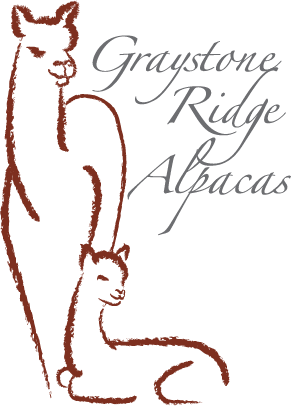Shearing Day
Shearing Day is a big day around here. It happens every Spring and this year it was May 1st. It’s the culmination of a year’s worth of work. We harvest the alpaca’s fiber and begin the long process of preparing it for use. This happens only once a year and I like to call it “organized chaos”. My crew is standing ready when the shearers arrive and everyone has a job and they know it well. A team of shearers come to my farm every year as they pass through this part of the country jumping from one alpaca farm to the next. One by one the alpacas are brought to the shearing area and the whole process takes less than 10 minutes. First, Josh selects the order of the alpacas based on color, disposition and sex. Josh directs the movement and flow of the animals. The first animal is haltered and another team will try to clean up the alpaca as much as possible. Removing vegetative material now makes processing the fiber much easier later. Next, this alpaca will be taken to the shearing area and laid down. Now the fun begins. While one guy is shearing, another guy is checking the health of the mouth/teeth and informing me of anything odd. My husband is trimming toenails. I am sorting and gathering fiber as it comes off the alpaca and my mother is following me around with a clean labeled bag to put it all in. I am also evaluating the health of the animals skin and anything else I can get my hands on. They usually don’t like their belly being touched so now is a perfect time to check everything. This is a very safe process for the alpacas but sometimes we get a “nervous Nelly” that pees the whole time…clean up in aisle 3! After shearing, the alpaca stands up and shakes off the little bits of cut fiber and then gets led back to the pen. The area is swept and generally cleaned up between each animal. I don’t want stray white fiber getting mixed up with the black fiber. The next one is already prepped and ready to shear. We do this until everyone is sheared. Everyone gets sheared every year, no exceptions. The shearers won’t be back for another year and it is inhumane to have an alpaca in full fleece in the middle of Summer.
This year was relatively uneventful as far as craziness. Nobody got loose, no humans got knocked over, no males were inadvertently put in line next to an “open” female which sometimes leads to unauthorized breeding (or at least trying to breed). :) Sometimes I invite smaller farms to bring in their alpacas to get sheared because it helps coordinate stops for the shearers. Those alpacas are not familiar with my farm and can sometimes be quite a handful. I step back and get out of the way for them. This year it was just us.
After the shearers move on to another farm I am left with bags and bags of raw fleece (fiber). Each bag was labeled with their name so I can now go back and fully evaluate the fiber. The quality and strength of the fiber is a window into the health of the animal. The fiber tells me many secrets and over the years I have learned to listen. I make changes to feed, meds and hay based on the evaluation of the fiber. After this I begin the long process of cleaning and processing the fiber for use in my many events, to make products and to sell.
I look at everyone one more time and then release them back to the pasture. This is a site to see. They run and jump and kick their legs in the air. They roll around in the grass like dogs scratching their backs and are generally just happy to be without the fiber. They certainly look odd without the fiber but they are definitely more comfortable.
